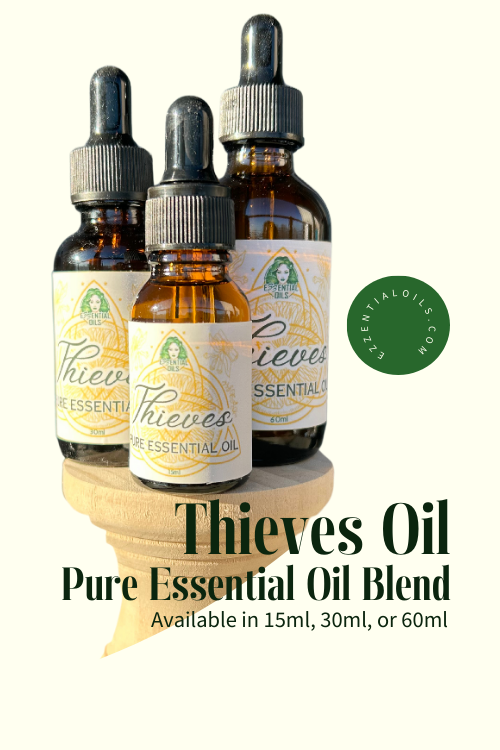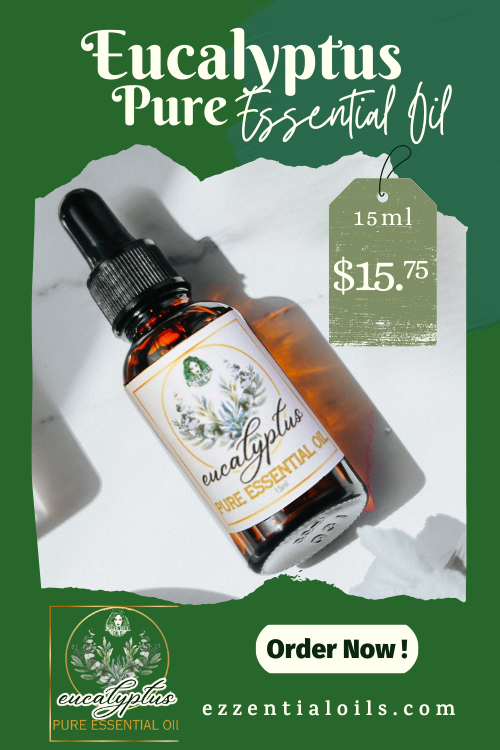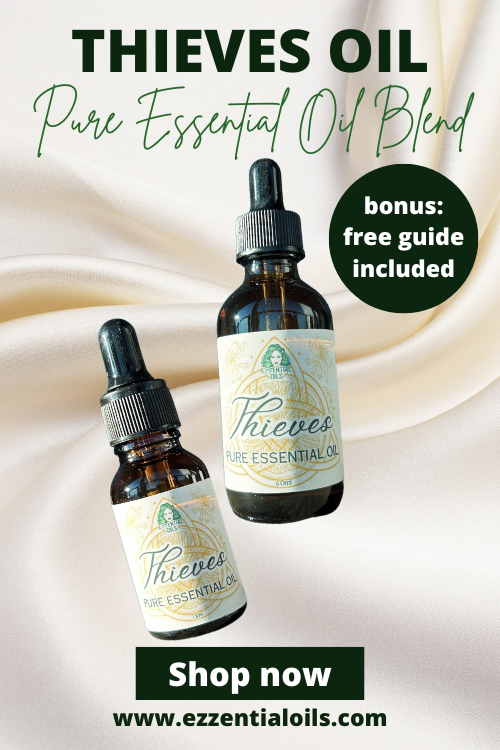DIY Moisturizer:
A Natural Way to Keep Your Skin Hydrated and Glowing
Keeping your skin moisturized is an essential part of any skincare routine. Unfortunately, many store-bought moisturizers are packed with chemicals, preservatives, and fragrances that can irritate your skin or contribute to long-term health concerns. The good news is that making your own DIY moisturizer is easy, affordable, and a natural alternative that you can customize to suit your skin type and preferences.
In this article, we'll dive deep into the benefits of DIY moisturizers, the best natural ingredients to use, how to create your own at home, and tips on how to store and apply your moisturizer for maximum results.
Why DIY Moisturizer?
Making your own moisturizer comes with a host of benefits:
Control Over Ingredients
One of the greatest benefits of making your own moisturizer is the control you have over the ingredients. Commercial moisturizers often contain a long list of chemicals, preservatives, and synthetic fragrances that can irritate sensitive skin or lead to long-term health concerns. By making your own, you can select natural, pure ingredients that work best for your skin and avoid potentially harmful additives. For example, many store-bought lotions contain parabens, sulfates, and artificial dyes, which may disrupt your skin's natural barrier or cause allergic reactions. When you make your own moisturizer, you know exactly what's in it and can ensure it's free from anything that might cause irritation or harm, giving you peace of mind knowing you're using only skin-friendly ingredients.
All-Natural Ingredients
When you opt for DIY moisturizers, you're choosing all-natural ingredients that work in harmony with your skin. Natural oils, butters, and botanicals are packed with essential vitamins, minerals, and antioxidants that nourish your skin without the need for chemical additives. For instance, shea butter and coconut oil are rich in fatty acids that deeply hydrate, while essential oils like lavender or frankincense provide additional skin benefits such as anti-aging properties or soothing effects. These ingredients don't just moisturize, they actively improve the overall health and texture of your skin. Additionally, many commercial moisturizers contain alcohol and other drying agents, which can strip the skin of its natural oils. By using natural ingredients, you maintain your skin's moisture balance, keeping it soft, supple, and healthy.
Customization
One of the best things about making your own moisturizer is that you can customize it to suit your unique skin type and specific needs. Everyone's skin is different, and factors like age, climate, and skin condition can all affect how your skin responds to different products. With DIY moisturizers, you can choose ingredients that directly target your skin concerns. For example, if you have dry skin, you might want to use richer oils like argan or jojoba, which help lock in moisture and prevent flakiness. If you have oily or acne-prone skin, lighter oils such as grapeseed or tea tree oil can help balance oil production and fight breakouts. If your skin is sensitive or prone to irritation, you can opt for gentle ingredients like chamomile or aloe vera to calm and soothe. The ability to personalize your moisturizer allows you to address your skin's individual needs and create a product that's perfectly suited for you.
Eco-Friendly
Making your own moisturizer also has significant environmental benefits. Many commercial skincare products are packaged in plastic bottles, which contribute to pollution and waste. By creating your own moisturizer, you can cut down on plastic usage, especially if you choose to reuse glass jars or other eco-friendly containers. Not only does this reduce waste, but it also supports a more sustainable lifestyle by minimizing your carbon footprint. Additionally, the ingredients you choose for your DIY moisturizer often come in bulk or recyclable packaging, which further reduces your environmental impact. When you take a more eco-conscious approach to skincare, you're not just caring for your skin; you're also doing your part to protect the planet.
Cost-Effective
High-quality skincare products, especially those that are natural and free of harsh chemicals, can be quite expensive. However, making your own moisturizer is a highly cost-effective alternative. Ingredients like oils, butters, and essential oils may seem pricey at first, but they go a long way. You can use a small amount of each ingredient to make a large batch of moisturizer, which saves money over time. For example, a bottle of organic coconut oil or shea butter may seem expensive initially, but these ingredients can be used in a variety of DIY skincare products, not just moisturizers. When you compare the cost of homemade moisturizer to the price of store-bought brands, you'll likely find that you're spending much less, especially since you won't need to repurchase products every few weeks. In the long run, making your own moisturizer helps you maintain a healthy skincare routine without breaking the bank.
Using natural oils, butters, and botanical extracts, DIY moisturizers offer powerful hydration, repair, and protection to your skin. Let's take a closer look at the ingredients you'll need and how to craft your perfect moisturizer.
Best Ingredients for DIY Moisturizer
The key to a successful DIY moisturizer is choosing the right ingredients for your skin's needs. Here are some of the most popular and effective natural ingredients for homemade moisturizers:
Carrier Oils: These oils are the foundation of your moisturizer. Some of the best options include:
Jojoba Oil: Similar to your skin's natural oils, it's perfect for hydrating and balancing skin.
Argan Oil: Rich in antioxidants and essential fatty acids, ideal for dry or aging skin.
Coconut Oil: Known for its antibacterial properties, great for dry or sensitive skin.
Almond Oil: Lightweight and nourishing, perfect for all skin types.
Olive Oil: Highly moisturizing and anti-inflammatory, excellent for dry or mature skin.
Butters: Butters are rich in fatty acids and are incredibly hydrating, making them perfect for thicker creams and moisturizers.
Shea Butter: A deeply nourishing butter that helps with dry, irritated skin and provides a natural glow.
Cocoa Butter: Great for moisturizing and improving skin elasticity.
Essential Oils: These oils add fragrance and provide specific skin benefits. Some of the best essential oils for moisturizers include:
Lavender: Calming and soothing, great for sensitive skin.
Frankincense: Anti-aging properties, perfect for mature or dry skin.
Tea Tree: Known for its antibacterial properties, ideal for acne-prone skin.
Geranium: Balances and hydrates, great for all skin types.
Aloe Vera Gel: A fantastic hydrator with anti-inflammatory properties, soothing and calming for irritated or dry skin.
Honey: A natural humectant, honey helps attract moisture to the skin and leaves it soft and smooth.
Witch Hazel: A natural astringent that tightens skin and helps with inflammation.
Basic DIY Moisturizer Recipe
Now that you know the best ingredients, let's dive into creating a simple, nourishing DIY moisturizer. This basic recipe is perfect for all skin types and uses easily available ingredients.
Ingredients:
1/4 cup carrier oil (jojoba, almond, or argan oil)
1/4 cup shea butter or cocoa butter
1 tablespoon aloe vera gel
5-10 drops essential oil (lavender or frankincense)
1 teaspoon vitamin E oil (optional, for added hydration and skin protection)
Instructions:
1. Melt the Butters: In a double boiler or glass bowl over hot water, melt your shea butter or cocoa butter until it becomes liquid.
2. Add Carrier Oil: Once melted, remove the butters from heat and stir in your chosen carrier oil.
3. Mix in Aloe Vera: Stir in the aloe vera gel to add hydration and soothing properties to your moisturizer.
4. Add Essential Oils: Add your essential oils, adjusting the number of drops based on your scent preference. Lavender is a great option for relaxation, while frankincense provides anti-aging benefits.
5. Optional – Add Vitamin E: Stir in a teaspoon of vitamin E oil if you want extra skin nourishment.
6. Cool and Whip: Allow the mixture to cool to room temperature. Once it's cool but still soft, use a hand mixer or whisk to whip the mixture into a fluffy consistency.
7. Store: Transfer your DIY moisturizer into a glass jar or container and store it in a cool, dry place.
How to Use Your DIY Moisturizer
Now that you've made your moisturizer, it's time to apply it! Here's how to use it for maximum hydration:
Cleanse Your Skin: Always start with clean skin. Use a gentle cleanser to remove dirt, makeup, and excess oils before applying your moisturizer.
Apply to Damp Skin: Apply your DIY moisturizer while your skin is still slightly damp. This helps lock in moisture for better hydration.
Massage in Circles: Use your fingers to massage the moisturizer gently into your skin in upward, circular motions. This will help improve circulation and allow the product to absorb better.
Don't Forget Your Neck and Décolletage: These areas often show signs of aging, so be sure to include them in your moisturizing routine.
You can use your DIY moisturizer morning and night, or as needed. It's gentle enough to apply daily and will keep your skin feeling soft, smooth, and hydrated.
How to Customize Your DIY Moisturizer
The beauty of making your own moisturizer is that you can customize it based on your skin type or specific needs. Here are some ideas for different variations:
For Dry Skin: Add extra nourishing oils like argan or coconut oil, and a bit of honey for added moisture. You can also increase the amount of shea butter for an extra rich formula.
For Oily or Acne-Prone Skin: Opt for lighter oils like jojoba or grape seed oil, which help balance oil production. Use tea tree or lavender essential oil for their acne-fighting properties.
For Sensitive Skin: Stick with gentle, calming ingredients like aloe vera, chamomile essential oil, and almond oil. Avoid strong fragrances or citrus oils.
For Anti-Aging: Frankincense, rose, or geranium essential oils are excellent choices for preventing wrinkles and maintaining skin elasticity. Use a heavier base like shea butter for deep nourishment.
You can even experiment by adding ingredients like rose water, calendula extract, or green tea for their soothing and antioxidant properties.
How to Store Your DIY Moisturizer
To keep your homemade moisturizer fresh and effective, proper storage is key. Here's how to store it:
Use a Glass Jar: Glass is best for preserving the potency of natural oils and butters.
Cool, Dry Place: Store your moisturizer away from direct sunlight and heat. A bathroom cabinet or cool closet works well.
Shelf Life: Since there are no preservatives in this recipe, your DIY moisturizer should last for about 2-3 weeks. To extend its shelf life, store it in the fridge or make smaller batches.
Making your own moisturizer is a rewarding, easy, and natural way to give your skin the hydration it needs. By using simple ingredients like oils, butters, and essential oils, you can create a formula that works perfectly for your skin type and needs. Plus, DIY moisturizers are customizable, eco-friendly, and cost-effective.
With just a few steps, you'll have a luxurious moisturizer that not only nourishes and hydrates your skin but also helps you avoid harmful chemicals and preservatives found in commercial skincare products. Whether you have dry, oily, or sensitive skin, there's a DIY moisturizer recipe for everyone. So, grab your ingredients and start crafting your own personalized skincare today!
Please note, the International Federation of Aromatherapists do not recommend that Essential Oils be taken internally, unless under the supervision of a Medical Doctor, who is also qualified in clinical Aromatherapy. In addition, Essential Oils must be properly diluted before use, in order to avoid any damages to property or adverse physical effects (including injury or bodily harm).
This article is for information purposes only. All Ezzential Oils products are for external use only unless otherwise indicated. This information is not intended to diagnose, treat, cure, or prevent any disease, and it should not be used by anyone who is pregnant or under the care of a medical practitioner. Please refer to our policies for further details, and our disclaimer below.
In this article, we'll dive deep into the benefits of DIY moisturizers, the best natural ingredients to use, how to create your own at home, and tips on how to store and apply your moisturizer for maximum results.
Why DIY Moisturizer?
Making your own moisturizer comes with a host of benefits:
Control Over Ingredients
One of the greatest benefits of making your own moisturizer is the control you have over the ingredients. Commercial moisturizers often contain a long list of chemicals, preservatives, and synthetic fragrances that can irritate sensitive skin or lead to long-term health concerns. By making your own, you can select natural, pure ingredients that work best for your skin and avoid potentially harmful additives. For example, many store-bought lotions contain parabens, sulfates, and artificial dyes, which may disrupt your skin's natural barrier or cause allergic reactions. When you make your own moisturizer, you know exactly what's in it and can ensure it's free from anything that might cause irritation or harm, giving you peace of mind knowing you're using only skin-friendly ingredients.
All-Natural Ingredients
When you opt for DIY moisturizers, you're choosing all-natural ingredients that work in harmony with your skin. Natural oils, butters, and botanicals are packed with essential vitamins, minerals, and antioxidants that nourish your skin without the need for chemical additives. For instance, shea butter and coconut oil are rich in fatty acids that deeply hydrate, while essential oils like lavender or frankincense provide additional skin benefits such as anti-aging properties or soothing effects. These ingredients don't just moisturize, they actively improve the overall health and texture of your skin. Additionally, many commercial moisturizers contain alcohol and other drying agents, which can strip the skin of its natural oils. By using natural ingredients, you maintain your skin's moisture balance, keeping it soft, supple, and healthy.
Customization
One of the best things about making your own moisturizer is that you can customize it to suit your unique skin type and specific needs. Everyone's skin is different, and factors like age, climate, and skin condition can all affect how your skin responds to different products. With DIY moisturizers, you can choose ingredients that directly target your skin concerns. For example, if you have dry skin, you might want to use richer oils like argan or jojoba, which help lock in moisture and prevent flakiness. If you have oily or acne-prone skin, lighter oils such as grapeseed or tea tree oil can help balance oil production and fight breakouts. If your skin is sensitive or prone to irritation, you can opt for gentle ingredients like chamomile or aloe vera to calm and soothe. The ability to personalize your moisturizer allows you to address your skin's individual needs and create a product that's perfectly suited for you.
Eco-Friendly
Making your own moisturizer also has significant environmental benefits. Many commercial skincare products are packaged in plastic bottles, which contribute to pollution and waste. By creating your own moisturizer, you can cut down on plastic usage, especially if you choose to reuse glass jars or other eco-friendly containers. Not only does this reduce waste, but it also supports a more sustainable lifestyle by minimizing your carbon footprint. Additionally, the ingredients you choose for your DIY moisturizer often come in bulk or recyclable packaging, which further reduces your environmental impact. When you take a more eco-conscious approach to skincare, you're not just caring for your skin; you're also doing your part to protect the planet.
Cost-Effective
High-quality skincare products, especially those that are natural and free of harsh chemicals, can be quite expensive. However, making your own moisturizer is a highly cost-effective alternative. Ingredients like oils, butters, and essential oils may seem pricey at first, but they go a long way. You can use a small amount of each ingredient to make a large batch of moisturizer, which saves money over time. For example, a bottle of organic coconut oil or shea butter may seem expensive initially, but these ingredients can be used in a variety of DIY skincare products, not just moisturizers. When you compare the cost of homemade moisturizer to the price of store-bought brands, you'll likely find that you're spending much less, especially since you won't need to repurchase products every few weeks. In the long run, making your own moisturizer helps you maintain a healthy skincare routine without breaking the bank.
Using natural oils, butters, and botanical extracts, DIY moisturizers offer powerful hydration, repair, and protection to your skin. Let's take a closer look at the ingredients you'll need and how to craft your perfect moisturizer.
Best Ingredients for DIY Moisturizer
The key to a successful DIY moisturizer is choosing the right ingredients for your skin's needs. Here are some of the most popular and effective natural ingredients for homemade moisturizers:
Carrier Oils: These oils are the foundation of your moisturizer. Some of the best options include:
Jojoba Oil: Similar to your skin's natural oils, it's perfect for hydrating and balancing skin.
Argan Oil: Rich in antioxidants and essential fatty acids, ideal for dry or aging skin.
Coconut Oil: Known for its antibacterial properties, great for dry or sensitive skin.
Almond Oil: Lightweight and nourishing, perfect for all skin types.
Olive Oil: Highly moisturizing and anti-inflammatory, excellent for dry or mature skin.
Butters: Butters are rich in fatty acids and are incredibly hydrating, making them perfect for thicker creams and moisturizers.
Shea Butter: A deeply nourishing butter that helps with dry, irritated skin and provides a natural glow.
Cocoa Butter: Great for moisturizing and improving skin elasticity.
Essential Oils: These oils add fragrance and provide specific skin benefits. Some of the best essential oils for moisturizers include:
Lavender: Calming and soothing, great for sensitive skin.
Frankincense: Anti-aging properties, perfect for mature or dry skin.
Tea Tree: Known for its antibacterial properties, ideal for acne-prone skin.
Geranium: Balances and hydrates, great for all skin types.
Aloe Vera Gel: A fantastic hydrator with anti-inflammatory properties, soothing and calming for irritated or dry skin.
Honey: A natural humectant, honey helps attract moisture to the skin and leaves it soft and smooth.
Witch Hazel: A natural astringent that tightens skin and helps with inflammation.
Basic DIY Moisturizer Recipe
Now that you know the best ingredients, let's dive into creating a simple, nourishing DIY moisturizer. This basic recipe is perfect for all skin types and uses easily available ingredients.
Ingredients:
1/4 cup carrier oil (jojoba, almond, or argan oil)
1/4 cup shea butter or cocoa butter
1 tablespoon aloe vera gel
5-10 drops essential oil (lavender or frankincense)
1 teaspoon vitamin E oil (optional, for added hydration and skin protection)
Instructions:
1. Melt the Butters: In a double boiler or glass bowl over hot water, melt your shea butter or cocoa butter until it becomes liquid.
2. Add Carrier Oil: Once melted, remove the butters from heat and stir in your chosen carrier oil.
3. Mix in Aloe Vera: Stir in the aloe vera gel to add hydration and soothing properties to your moisturizer.
4. Add Essential Oils: Add your essential oils, adjusting the number of drops based on your scent preference. Lavender is a great option for relaxation, while frankincense provides anti-aging benefits.
5. Optional – Add Vitamin E: Stir in a teaspoon of vitamin E oil if you want extra skin nourishment.
6. Cool and Whip: Allow the mixture to cool to room temperature. Once it's cool but still soft, use a hand mixer or whisk to whip the mixture into a fluffy consistency.
7. Store: Transfer your DIY moisturizer into a glass jar or container and store it in a cool, dry place.
How to Use Your DIY Moisturizer
Now that you've made your moisturizer, it's time to apply it! Here's how to use it for maximum hydration:
Cleanse Your Skin: Always start with clean skin. Use a gentle cleanser to remove dirt, makeup, and excess oils before applying your moisturizer.
Apply to Damp Skin: Apply your DIY moisturizer while your skin is still slightly damp. This helps lock in moisture for better hydration.
Massage in Circles: Use your fingers to massage the moisturizer gently into your skin in upward, circular motions. This will help improve circulation and allow the product to absorb better.
Don't Forget Your Neck and Décolletage: These areas often show signs of aging, so be sure to include them in your moisturizing routine.
You can use your DIY moisturizer morning and night, or as needed. It's gentle enough to apply daily and will keep your skin feeling soft, smooth, and hydrated.
How to Customize Your DIY Moisturizer
The beauty of making your own moisturizer is that you can customize it based on your skin type or specific needs. Here are some ideas for different variations:
For Dry Skin: Add extra nourishing oils like argan or coconut oil, and a bit of honey for added moisture. You can also increase the amount of shea butter for an extra rich formula.
For Oily or Acne-Prone Skin: Opt for lighter oils like jojoba or grape seed oil, which help balance oil production. Use tea tree or lavender essential oil for their acne-fighting properties.
For Sensitive Skin: Stick with gentle, calming ingredients like aloe vera, chamomile essential oil, and almond oil. Avoid strong fragrances or citrus oils.
For Anti-Aging: Frankincense, rose, or geranium essential oils are excellent choices for preventing wrinkles and maintaining skin elasticity. Use a heavier base like shea butter for deep nourishment.
You can even experiment by adding ingredients like rose water, calendula extract, or green tea for their soothing and antioxidant properties.
How to Store Your DIY Moisturizer
To keep your homemade moisturizer fresh and effective, proper storage is key. Here's how to store it:
Use a Glass Jar: Glass is best for preserving the potency of natural oils and butters.
Cool, Dry Place: Store your moisturizer away from direct sunlight and heat. A bathroom cabinet or cool closet works well.
Shelf Life: Since there are no preservatives in this recipe, your DIY moisturizer should last for about 2-3 weeks. To extend its shelf life, store it in the fridge or make smaller batches.
Making your own moisturizer is a rewarding, easy, and natural way to give your skin the hydration it needs. By using simple ingredients like oils, butters, and essential oils, you can create a formula that works perfectly for your skin type and needs. Plus, DIY moisturizers are customizable, eco-friendly, and cost-effective.
With just a few steps, you'll have a luxurious moisturizer that not only nourishes and hydrates your skin but also helps you avoid harmful chemicals and preservatives found in commercial skincare products. Whether you have dry, oily, or sensitive skin, there's a DIY moisturizer recipe for everyone. So, grab your ingredients and start crafting your own personalized skincare today!
Safety Information
Please note, the International Federation of Aromatherapists do not recommend that Essential Oils be taken internally, unless under the supervision of a Medical Doctor, who is also qualified in clinical Aromatherapy. In addition, Essential Oils must be properly diluted before use, in order to avoid any damages to property or adverse physical effects (including injury or bodily harm).
This article is for information purposes only. All Ezzential Oils products are for external use only unless otherwise indicated. This information is not intended to diagnose, treat, cure, or prevent any disease, and it should not be used by anyone who is pregnant or under the care of a medical practitioner. Please refer to our policies for further details, and our disclaimer below.













